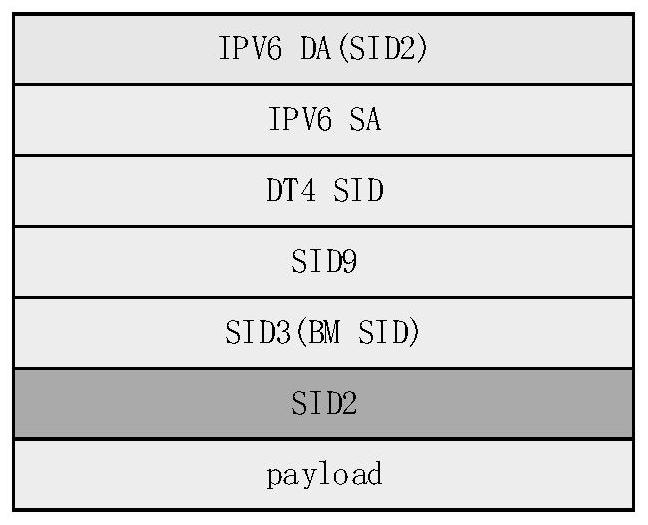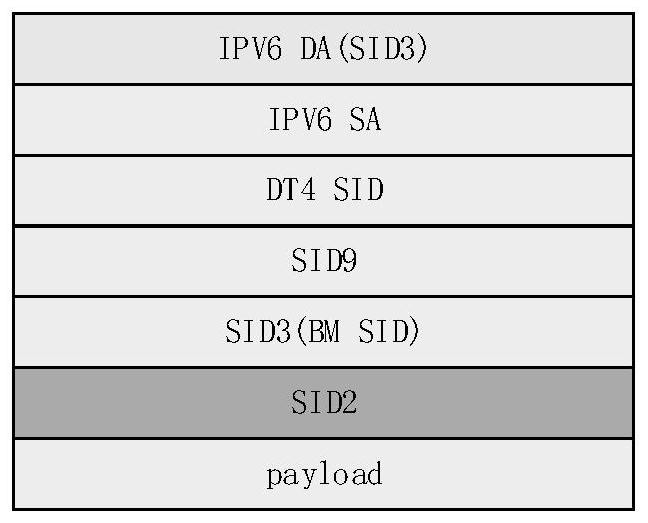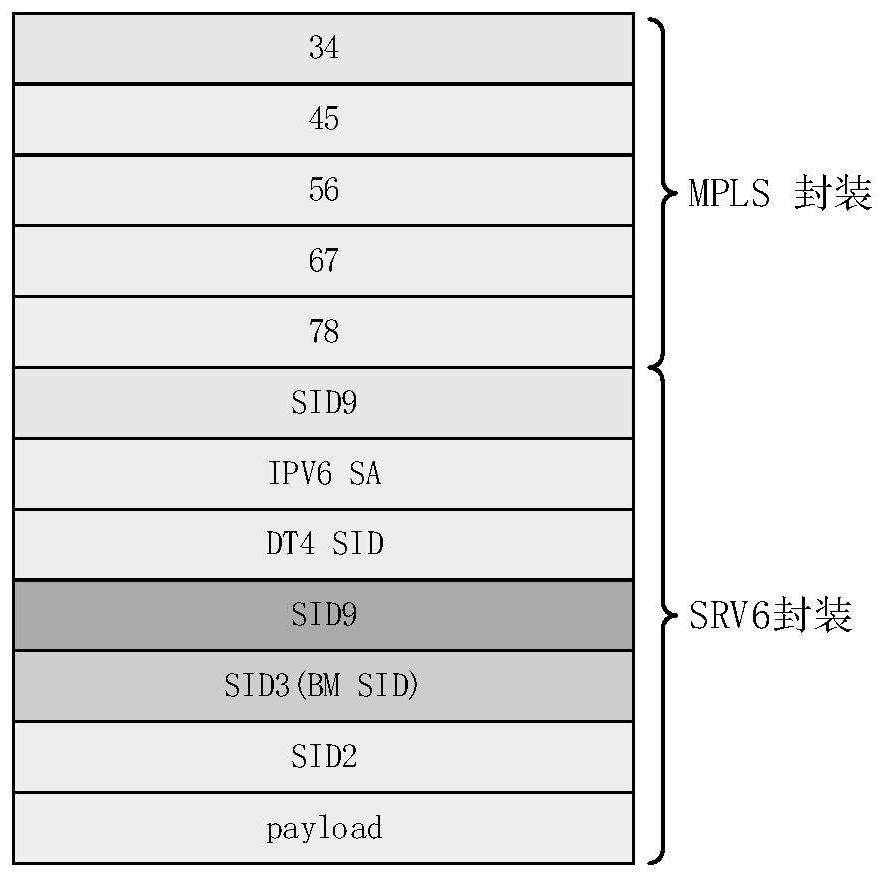Cross-SR MPLS and SRV6 domain interoperation communication method and system
An interoperable and unified technology, applied in the field of communication, can solve problems such as complex message format conversion, reduce the complexity of business deployment and the difficulty of operation and maintenance, reduce the amount of configuration information and state information maintenance, and reduce the burden of encapsulation
- Summary
- Abstract
- Description
- Claims
- Application Information
AI Technical Summary
Problems solved by technology
Method used
Image
Examples
Embodiment 1
[0043] In the existing message transmission process, when the message propagates in the MPLS domain, it relies on the MPLS label to record the forwarding information. When it propagates in the SRV6 domain, it needs to record the forwarding information according to the SID stack information in the SRH. The SRV6 message does not contain MPLS. information.
[0044] like Figure 1 to Figure 5 As shown, it is the encapsulation and forwarding structure of SRV6 packets in the existing end-to-end SRV6 OVER MPLS scenario, and the packet encapsulation is performed based on END BM. The message to be sent is encapsulated on the first source node in the SRV6 domain. At this time, the message structure does not contain the label information of the MPLS domain, and is directly forwarded according to the normal SRV6 message, where SID3 is the END BMSID, bound to a SR on the MPLS label stack. When the packet is transmitted to the border node of the MPLS domain according to the SRV6 packet fo...
Embodiment 2
[0087] Based on the method for interoperable communication across SR MPLS and SRV6 domains provided in Embodiment 1, specific implementation methods can be selected according to requirements in different specific application scenarios. In some specific implementation manners, the cross-SR MPLS and SRV6 domain interoperable communication method provided in Embodiment 1 may be realized through the specific implementation manners in this embodiment.
[0088] like Figure 12 In the forwarding path shown, R1-R10 is a forwarder device, and an end-to-end L3VPN service between R1-R10 is established, and the link adjacency label (Ri-Rj) is denoted as ij. R1, R2, R3, R8, R9, and R10 support SRV6 forwarding, and the SID information assigned to the corresponding nodes is SIDi. R3, R4, R5, R6, R7, and R8 support MPLS forwarding, and the corresponding nodes will assign the adjacency label of Rij. The R10 device will allocate the service DT4 SID and forward it by looking up the VRF routing...
Embodiment 3
[0098] On the basis of the method for interoperable communication across SR MPLS and SRV6 domains provided by the above-mentioned embodiment 1 to embodiment 2, the present invention also provides a system for interoperable communication between SR MPLS and SRV6 domains that can be used to implement the above method .
[0099] like Figure 19 As shown, it includes a centralized management device 1 and at least one forwarding device 2 , and there is a communication connection between the centralized management device 1 and each forwarding device 2 . In actual implementation, the centralized management device 1 can be a separate device, or can use a certain forwarding device 2 as an agent, or can use the upper-layer centralized controller of the previous existing forwarding device. In the example of Embodiment 2, R1-R10 are all forwarding devices 2, and the centralized management device 1 can be an additional device capable of communicating with R1-R10, or any device in R1-R10, ...
PUM
 Login to View More
Login to View More Abstract
Description
Claims
Application Information
 Login to View More
Login to View More - R&D
- Intellectual Property
- Life Sciences
- Materials
- Tech Scout
- Unparalleled Data Quality
- Higher Quality Content
- 60% Fewer Hallucinations
Browse by: Latest US Patents, China's latest patents, Technical Efficacy Thesaurus, Application Domain, Technology Topic, Popular Technical Reports.
© 2025 PatSnap. All rights reserved.Legal|Privacy policy|Modern Slavery Act Transparency Statement|Sitemap|About US| Contact US: help@patsnap.com



